
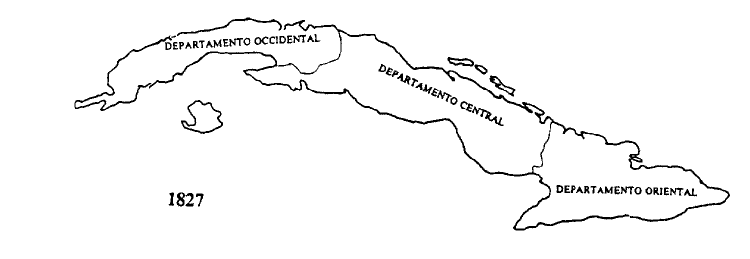
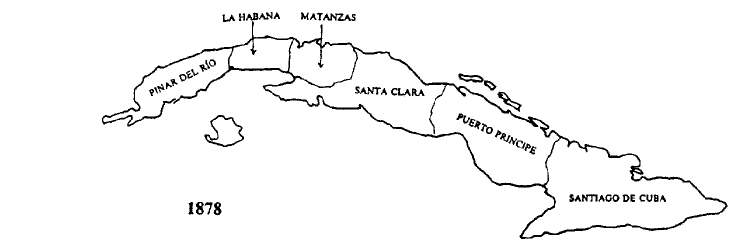
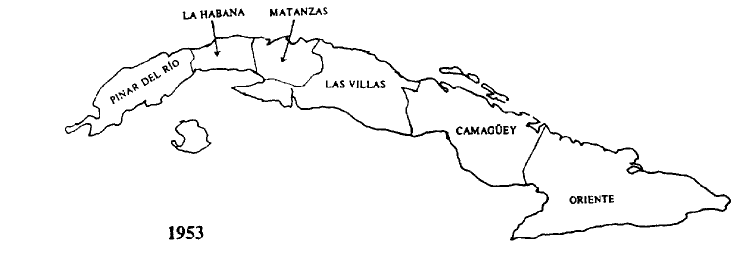
In late November, 1994, several of the long distance telephone call carriers, including AT & T, MCI, Sprint, and TLD (Puerto Rico), started to offer direct dialing for calls to Cuba.
If you are subscribers to these services, the method is now quite simple. Follow the usual pattern that you use for international long distance calls. Telephone numbers in Cuba are connected using 011-53-(city code)-telephone number desired. Note that 011 is the international code and 53 is the country code for Cuba. City codes for Cuba include Camagüey 32, Ciego de Avila 33, Cienfuegos 43, Granma 23, Guanajay 686, Guantánamo 21, Habana (city) 7, Holguín 24, Isla Juventud 61, Las Villas 42, Matanzas 5, Provincia Habana 6, Pinar del Río 8, Sancti Spiritus 41, Santiago de Cuba 22, and Villa Clara 42.It seems that the city codes adjust the shorter local phone numbers for the computerized long distance calls. AT & T's operator can be contacted at the toll free number 1-700-460-1000.
We have been sending the Flora of the Greater Antilles Newsletter over the last four years. As expected, some of our subscribers have moved during that time. The post office returned copies of Number 6 (Sept 1994) for Hilda Díaz-Soltero (formerly at Eden Prairie, MN) and Keith Jackson (formerly at Los Angeles, CA).
Any one having a current address for either should contact the Newsletter Editor promptly. Subscribers of the Newsletter and collaborating botanists for the Flora of the Greater Antilles are requested to send corrections to the mailing addresses used on the envelopes to mail the Newsletter. Also, please send your telephone, fax numbers and e-mail (INTERNET) address.
We have received a copy of the following dissertation from Ms. Newson. If other graduate students have finished theses or dissertations and have not yet published the material, we welcome receiving information about the unpublished manuscripts. To include them, we will need at least copies of the title and the summary pages. If any theses or dissertations are sent to us, we will deposit them in the Library of The New York Botanical Garden for use by others.
Newson, L. A. 1993. Native West Indian plant use. Ph.D. dissertation. University of Florida:
Gainesville, Florida. An archaeological study of the plant component of prehistoric diet and human adaptation in
the Caribbean islands of Bonaire, Grenada, Barbados, Antigua, Nevis, St. Eustatius, St. Martin, St. John, Puerto
Rico, Hispaniola (Dominican Republic and Haiti).
Measuring and Monitoring Forest Biological Diversity: The International Network of Biodiversity Plots. 23-25 May 1995. S. Dillon Ripley Center, Smithsonian Institution, Washington, D.C. Includes sessions on Wednesday, May 24, on St. John, Virgin Islands (4 presentations) and Puerto Rico (5 presentations). Registration: $200. Information: Olga H. MacBryde, telephone (202) 357-4793, fax (202) 786-2557, e-mail: ic.ohm@ic.si.edu
Sixth Symposium on the Natural History of the Bahamas. 9-13 June 1995. Bahamian Field Station, San Salvador, Bahamas. Half-days and evening of presentations of research on the natural history of the Bahama Islands, with afternoon field trips. Abstracts for papers and posters were due 15 March 1995. Proceedings volume will be published. Information: Dr. Daniel R. Suchy, Executive Director, Bahamian Field Station, Ltd., c/o Red Aircraft, 270 SW 34 th Street, Ft. lauderdale, FL 33315. telephone & fax (809) 331-2520.
Museum Techniques in Botany Workshop (Second National Museum of Natural History Workshop for Latin America and the Caribbean). 2-16 Sep 1995. National Museum of Natural History, Washington, D.C. Introduction to concepts and methods of museum research and collections management for entry-level herbarium professionals (those initiating careers in herbaria and working with botanical collections) from public and private institutions in tropical Latin America and the Caribbean. Lectures in English or Spanish. Some English is required. Information: Argelis Román, Botany Workshop, Biodiversity Programs, National Museum of Natural History, MRC-180, Smithsonian Institution, Washington, D.C. 20560, U.S.A.. Fax (202) 786-2934, e-mail mnhbd007@sivm.si.edu
We would like to start a new column: Research in Progress, that will include short notices of plant science research on native Caribbean plants or plants introduced in the West Indies. Send the title of the project and a short summary of what work is currently being done and when the work is expected to be completed.
The Technical Center for Agricultural and Rural Cooperation was established in 1983 by what is now the European Union for assistance to countries participating in the Lomé Convent, of which Jamaica, Haiti, and the Dominican Republic of the Greater Antilles are signatory members. Many of the Lesser Antilles islands are members too. The Center provides access to information, conducts research, and takes innovations to the field in the areas of agricultural and rural development. They could be contacted for information and publications on crops. The address is:
Centre Technique de Coopération Agricole et Rurale
Die Rietkanmpen
Galvanistraat, 9
Ede, The Netherlands
Tel. (31) (0) 8380-60400
FAX (31) (0) 8380-31052
The mailing address:
Postbus 380
6700 AJ Wageningen,
The Netherlands
Thomas A. Zanoni
Dealing with older literature and especially older herbarium labels leaves one in a quandary when all that a person has is a modern or recent map or atlas. The investigator is exasperated for locations in the Antillean islands since most atlases usually give little detail to any of the islands; few show where current province or department lines are located.
The work on the Flora of the Greater Antilles requires checking localities of types and especially non-types to describe the geographical distribution of a species. Our specimens, particularly those with some indication of locality span about two centuries. Many of the place names (see Howard, 1988, and Underwood, 1905) are difficult to find on maps. When mention of a province or department is made, it is based on a system which is quite different from that indicated on our modern maps. For example, when specimens of Charles Wright cite locations in Provincia Oriente in Cuba, we encounter some localities little known on our recent maps and, worse yet, the province no longer exists.
A search was made to find maps of Cuba, Haiti, and the Dominican Republic for different time periods to indicate what and where were the provinces. The Nuevo Atlas Nacional de Cuba (Oliva Gutierrez, 1989) provided a very useful comparison of the provinces for the years 1774, 1827, 1878, 1953, 1970, and 1976. One can immediately see what Wright was calling Oriente province on the map of 1827, which shows provinces as they were in his time (1856-1857 and 1858-1867) in Cuba. The province (as Oriente or Santiago de Cuba) existed, with minor variations in its western boundary until the 1976 reorganization of Cuban provinces. Another major collector of plants in Cuba, Erik L. Ekman, used provinces in the years 1914-1924, which can be found on the map of 1878. It is important to note that some of the provinces changed names during he last two centuries even if they did not have major realignments, whereas others may have been divided and the original name continued in use with new boundaries, e.g., Departamento Occidental or de La Habana of 1774 became Deptos. Occidental and Central by 1827, and then disappeared as Occidental but persisted as a newly defined Provincia La Habana by 1878, which was greatly altered by the loss of Isla de Pinos (now Isla de la Juventud) in 1976.
A search for maps of Haiti and the Dominican Republic did not result in a series of maps over the two centuries as in the case of Cuba. The dates of when the various Dominican provinces were chartered shows a gradual increment in the number of provinces over the years. It was decided that the first map of provinces of the Dominican Republic for the time of Ekman (1920's) would be needed to show in comparison to a current map. The same decision was made for the case of Haiti. The reason for these decisions is strongly based on the fact that Ekman was the principal collector of the earlier part of this century who used provinces on his herbarium labels for Dominican plants and departments for his Haitian plants. Almost all other collectors did not use regional designations on their labels.
Needless to say, the pre-1900's labels for Hispaniolan plants do not have regional designations.
We are fortunate that some mention a local town name! [Note: Early specimens taken from Hispaniola may mention
Santo Domingo or St. Domingue on them. Most of these labels are referring to the names of the island. It is not
rare to see modern citations of types from the 1700's and 1800's being cited as coming from the Dominican Republic,
when the original citation was "Santo Domingo" (or "St. Domingue"), a name that was also popularly
applied (even to the present time!) to what became the Dominican Republic in 1844. It is necessary to check Urban
(1902) for collectors' itineraries to determine whether a particular locality citation refers to modern Dominican
Republic or Haiti. Needless to say, that an assumption that Santo Domingo refers to the modern city of the same
name is probably wrong. Few types or non-types were collected there until more recent times!]




| DOMINICAN REPUBLIC : Provinces and capital district. Numbers are indicated on the maps. Names not in actual use are indicated with an asterisk (*). Several of the provincial names listed do not occur on the 1922, 1974, or 1989 maps, but reference is made to the actual province name. | |||
| La Altagracia (29) Azua (6) Baoruco (23) Barahona (9) Comendador* (16) Dajabón (13) Distrito Nacional ( 27) Duarte (19) Espaillat (4) La Estrelleta (16) Hato Mayor (32) Independencia (22) María Trinidad Sánchez (20) Monseñor Nouel (30) Monte Cristi (1) Monte Plata (31) Pacificador* (5) |
Pedernales (24) Peravia (25) Puerto Plata (2) La Romana (28) Salcedo (18) Samaná (8) San Cristóbal (26) Sánchez Ramírez (21) San Juan (17) San Pedro de Macoris (12) Santiago (3) Santiago Rodríguez (14) Santo Domingo* (10) El Seibo (11) Trujillo Valdéz* (26) Valverde (15) La Vega (7) |
1. Monte Cristi
2. Puerto Plata
3. Santiago
4. Espaillat
5. Pacificador*
6. Azua
7. La Vega
8. Samaná
9. Barahona
10. Santo Domingo*
11. El Seibo
12. San Pedro de Macoris
13. Dajabón
14. Santiago Rodríguez
15. Valverde
16. La Estrelleta
|
17. San Juan
18. Salcedo
19. Duarte
20. María Trinidad Sánchez
21. Sánchez Ramírez
22. Independencia
23. Baoruco
24. Pedernales
25. Peravia
26. San Cristóbal
27. Distrito Nacional
28. La Romana
29. La Altagracia
30. Monseñor Nouel
31. Monte Plata
32. Hato Mayor
|
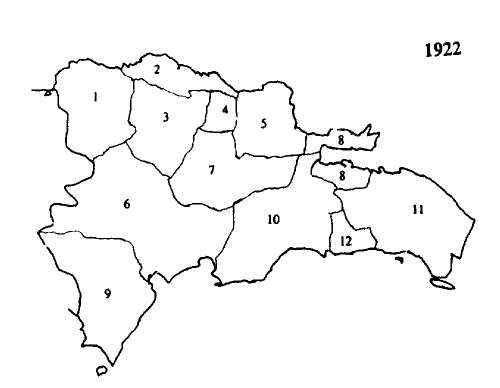
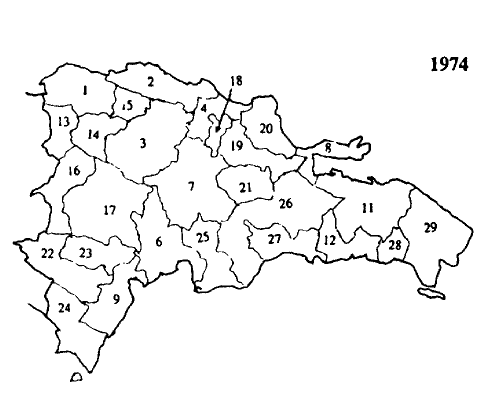
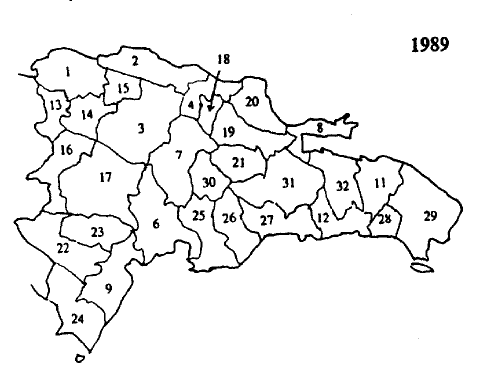
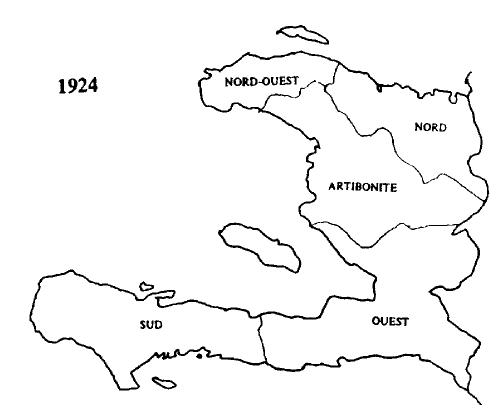 |
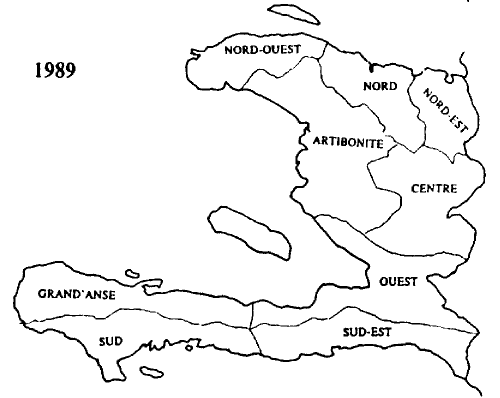 |
Cuban maps were adapted from Oliva Gutiérrez (1989). Dominican Republic map of 1922 was adapted from Vaughan et al. (1922), and the 1974 map was adapted from a map prepared by the Instituto Geografíco Universitario, Universidad Autónoma de Santo Domingo in 1974. The Haiti map adapted from Woodring et al. (1924). The 1989 maps of the Dominican Republic and Haiti were adapted from Haggerty (1989).
References Cited
Haggerty, R. A. (ed.) 1989. Dominican Republic and Haiti: country studies. Area Handbook series, Federal Research Division, Library of Congress. U. S. Government Printing Office: Washington, D. C.
Howard, R. A. 1988. Charles Wright in Cuba, 1856-1867. Chadwyck-Healey: Alexandria, Virginia.
Oliva Gutiérrez, G. (ed.). 1989. Nuevo atlas de Cuba. Instituto de Geografía de la Academia de Ciencias de Cuba & Instituto Cubano de Geodesia y Cartografía: La Habana, Cuba.
Underwood, L. M. 1905. A summary of Charles Wright's explorations in Cuba. Bull. Torrey Bot. Club 32: 291-300.
Urban, I. 1902. Notae biographicae peregrinatorum indiae occidentalis botanicorum. Symb. Antill. 3: 14-158.
Vaughan, T. W., W. Cooke, D. D. Condit, C. P. Ross, W. P. Woodring, & F. C. Calkins. 1922. Un reconocimiento geológico de la República Dominicana. Serv. Geol. República Dominicana Mem. 1: 1-302.
Woodring, W. P., J. S. Brown, & W. S. Burbank. 1924. Geology of the Republic of Haiti. Geological Survey of the Republic of Haiti: Port-au-Prince, Haiti.
Alberto Areces-Mallea
New York Botanical Garden
Bronx, NY 10458-5126, U.S.A.
I received a grant from the Cactus and Succulent Society of America to study cacti in the West Indies, and in particular to try and refind a population of a cactus from Haiti that was only known from a 1929 collection made by Leonard, with duplicates deposited in GH, NY and US. From the single collection this Haitian cactus appeared to represent a new genus. So, with the grant, my main objectives were:
To realize these objectives I had a convoluted flight itinerary because of the various visa restrictions imposed by the islands I was visiting, as well as airline flight schedules. My trip took me from New York to Santo Domingo to San Juan to Miami to Port-au-Prince to Miami to Kingston and finally back to New York. In the Dominican Republic I visited Bayahibe, Cabo Engaño, Azua, Barahona, Cabo Rojo, Pedernales, Lake Enriquillo area, Montecristi and Dajabón. In Puerto Rico I went to Boquerón, Guánica, Maricao, Cayey and Sierra Bermeja. In Haiti I travelled to Etang-Saumatre, Gonaives, Morne-Saint-Nicholas, Jean Rabel, Port-de-Paix and Saline Saint Michel. Finally, in Jamaica I visited Morant Bay, Hellshire Hills, Spanish Town area, Alligator Pond, Sanguinetti, Long Bay, Great Pedro Bluff and the Cockpit Country.
I was very successful in fulfilling my objectives. In Hispaniola I was able to relocate the cactus in NW Haiti that initially appeared to be a new genus. It turns out to be a new arborescent species of Leptocereus. The Melocactus from the Dominican Republic, previously reported as M. communis (a Jamaican species), is a new species, unrelated to the Jamaican taxon. Finally, I was able to relocate Opuntia acaulis and O. microcarpa but was unable to find O. falcata, even though I visited the type locality. It seems possible that the species is now extinct. I was also unable to find O. ekmanii in the field. Also, related to Hispaniola, Dr. Alain Liogier, now in Puerto Rico, requested that I write the Cactaceae for his "Flora de La Española." In Puerto Rico I was able to find the population of Melocactus intortus. From my observations it appears to be a new variety of that species. Despite a thorough, hands-and-knees search, I was unable to relocate Opuntia borinquensis, and suspect that it is now extinct. However, I was able to find what appears to be a new variety of O. moniliformis for Puerto Rico. Also, in Puerto Rico I have been able to grow almost all the cacti I have found in my travels and they are doing well and flowering. This garden in on the estate of Victor González, who has assisted me in many ways in my study of West Indian cacti. In Jamaica I was able to relocate the Mammillaria known previously from a single collection in the Cockpit Country. It is not M. columbiana (= M. eriacantha, a species from central Mexico) as reported but rather a new species. Mammillaria eriacantha is a yellow-flowered species known from Mexico to South America. This Jamaican material is red-flowered, among other differences. New for Jamaica I found Acanthocereus pentagonus. Fortunately, I was also able to relocate and collect the rare Jamaican endemic, Disocactus alatus. With very few exceptions, all known species of cacti from Hispaniola, Jamaica and Puerto Rico were collected. This greatly complements my field knowledge of Cuban cacti. I was able to assess the conservation status of the cacti as part of an ongoing study in which I am involved. This trip would not have been possible without the assistance of many individuals and organizations. First, I thank the Cactus and Succulent Society of America for a grant that made the trip possible. In the Dominican Republic collecting would not have been possible were it not for the facilities provided by the Universidad Autónoma de Santo Domingo. In Jamaica and Puerto Rico I availed myself of the indispensable aid of Dr. George Proctor and Victor González, respectively.
Thomas A. Zanoni
The sixth part of this bibliographic series on Caribbean plants, plant ecology, and plant taxonomy was published in the Flora of the Greater Antilles Newsletter No. 6, of September 1994.
Authors are requested to send copies of their publications to the editor of the Bibliography for inclusion in future parts of the series. Send the publications to:
T. Zanoni
New York Botanical Garden Bronx,
New York 10458-5126, U.S.A.
Abu-Asab, M. & P. D. Cantino. 1994. Systematic implications
of pollen morphology in subfamilies Lamioideae and Pogostemonoideae (Labiatae). Ann. Missouri Bot. Gard. 81: 653-686.
Allem, A. C. 1994. The origin of Manihot esculenta Crantz (Euphorbiaceae). Genet. Resour. Crop. Evol. 41: 133-150.
Aponte, N. E. & D. L. Ballantine. 1987. The life history and development of Murrayella periclados (C. Agardh) Schmitz (Rhodophyta, Rhodomelaceae) in culture. Cryptogamie Algog. 8: 29-39.
Aponte, N. E. & D. L. Ballantine. 1990. The life history in culture of Callithamnion boergesenii sp. nov. (Rhodophyta, Ceramiaceae) from the Caribbean. Phycologia 29:191-199.
Aponte, N. E. & D. L. Ballantine. 1991. The life history in culture of Seirospora occidentalis (Ceramiaceae, Rhodophyta) from the Caribbean. Cryptog. Bot. 2: 261-268.
Aponte, N. E. & D. L. Ballantine. 1992. The life history in culture of Pleonosporium caribaeum (Børgesen) R. E. Norris (Ceramiaceae, Rhodophyta) from the Caribbean. Cryptogamie Algol.
13: 15-23.
Aponte, N. E. & D. L. Ballantine. 1995. Aglaothamnion flexibile sp. nov. and Seirospora viridis
sp. nov. (Ceramiaceae, Rhodophyta) from Puerto Rico. Phycologia 34: 102-112.
Aponte, N. E., D. L. Ballantine. & J. N. Norris. 1994. The morphology and life history in culture of Aglaothamnion herveyi (Howe) comb. nov., with notes on A. felipponei (Howe) comb.
nov. (Ceramiaceae, Rhodophyta). Phycologia 33: 231-238.
Arias Granda, I. 1994. Xanthosoma cubense (Schott) Schott (Araceae): taxonomia y nomenclatura. Studia Bot.
12: 237-240.
Armbruster, W. S. 1994. Early evolution of Dalechampia (Euphorbiaceae): insights from phylogeny, biogeography, and comparative
ecology. Ann. Missouri Bot. Gard. 81: 302-316.
Armbruster, W. S., P. Martin, J. Kidd, R. Stafford, & D. G. Rogers. 1995. Reproductive significance of indirect
pollen-tube growth in Dalechampia (Euphorbiaceae). Amer. J. Bot. 82: 51-56.
Ayodele, M. S. 1994. Studies on the reproductive biology of Vernonia Schreb. (Asteraceae).
I. Types of inflorescences among different growth habits. Compositae Newsl. 25: 15-23.
Ayodele, M. S. 1994. Studies on the reproductive biology of Vernonia Schreb.(Asteraceae).
II. Flowering and post-pollination developments in the capitulum. Compositae Newsl. 25: 24-30.
Ballantine, D. L. 1984. Hurricane induced mass mortalities to a tropical subtidal community and subsequent recoveries.
Marine Ecol. Prog. Ser. 20: 75-83.
Ballantine, D. L. 1989. Reproduction in Caribbean plants of Botryocladia pyriformis and B. wynnei (Rhodymeniales, Rhodophyta). Phycologia 28: 237-242.
Ballantine, D. L. 1990. Ceramium bisporum sp. nov. (Rhodophyta, Ceramiales), an unusual new species from
deep-water habitats in the Caribbean. Phycologia 29: 146-149.
Ballantine, D. L., N. E. Aponte, & J. G. Holmquist. 1994. Multi-species algal balls and potentially imprisoned
fauna: an unusual benthic assemblage. Aquat. Bot. 48: 167-174.
Ballantine, D. L. & M. J. Wynne. 1985. Platysiphonia and Apoglossum (Delesseriaceae, Rhodophyta) in the tropical western Atlantic.
Phycologia 24: 459-465.
Ballantine, D. L. & M. J. Wynne. 1988. The life history and development of Hypoglossum rhizophorum (Delesseriaceae, Rhodophyta) in culture, a new deep-water species from the Caribbean. J. Phycol.
24: 8-12.
Baró Oviedo, I. & F. Cejas Rodríguez. 1994. Valorización de caracteres morfológicos
en Callicarpa L. (Verbenaceae). Especies cubanas con envés foliar albotomentoso. Fontqueria 40: 57-62.
Baró Oviedo, I. & P. P. Herrera Oliver. 1994. Nueva especie de Callicarpa L. (Verbenaceae)
de Cuba. Fontqueria 40: 53-55.
Barreto Valdés, A. 1992. Consideraciones taxonómicas sobre Caesalpinia myabensis (Leguminosae:
Caesalpinioideae) y especies afinies. Acta Bot. Cub. 89: 1-15.
Barreto Valdés, A. & A. Beyra Matos. 1992. Características epidérmico-foliares en táxones
cubanos de la tribu Detarieae (Leguminosae: Caesalpinioideae). Acta Bot. Cub. 93: 1-7.
Barreto Valdés, A., A. Beyra Matos, & N. Enríquez Salgueiro. 1995. Arquitectura foliar en táxones
cubanos de la tribu Detarieae (Leguminosae: Caesalpinioideae). Acta Bot. Cub. 92: 1-6.
Barreto Valdés, A., L. Catasús Guerra, N. Enríquez Salgueiro, & A. Beyra Matos. 1992.
Inventario florístico de las áreas del plan ovino del norte de Camagüey. Rep. Invest. Inst.
Ecol. Sist. [La Havana, Cuba] [not numbered]: 1-36.
Barreto Valdés, A., P. Herrera Oliver, & N. Rodríguez Salgueiro. 1992. Nuevos datos de distribución
para la flora de Cuba. I. Rep. Invest. Inst. Ecol. Sist. [La Habana, Cuba] ser. Bot. 8: 1-8.
Barreto Valdés, A., P. Herrera Oliver, N. Rodríguez Salgueiro & G. Espín. 1992. Lista
florística de Monte Quemado, sureste de la Reserva Natural de la Sierra del Chorrillo, municipio Najasa,
Provincia de Camagüey, Cuba. Rep. Invest. Inst. Ecol. Sist. [La Habana, Cuba] ser. Bot. 9: 1-16.
Barreto Valdés, A., E. Pérez Carreras, A. Beyra Matos, & N. Enríquez Salgueiro. 1992.
Flora angiospérmica medicinal de la Provincia Camagüey, Cuba. Acta Bot. Cub. 91: 1-105.
Barreto Valdés, A. & G. P. Yakovlev. 1990. [Notes on the genus Senna (Fabaceae).] Bot.
Zhurn. (Moscow & Leningrad) 75: 1294-1295. [In Russian.]
Bellingham, P. J. et al. 1992. Hurricanes need not cause high mortality: the effects of Hurricane Gilbert on forests
in Jamaica. J. Trop. Ecol. 8: 217-223.
*Bénito-Espinal, F. P. & E. Bénito-Espinal. 1991. L'Ouragan Hugo: génèse, incidences
géographiques et écologiques sur la Guadeloupe. Parc National de la Guadeloupe, Délégation
Régionale à l'Action Culturelle & Agence Guadeloupéene de l'Environnement du Tourisme
et des Loisirs. Imprimerie Désmoreaux: Fort-de France, Martinique.
Berazaín Iturralde, R. 1992. A note on plant/soil relationships in the Cuban serpentine flora, pp. 97-99
in A. J. M. Baker, J. Proctor & R. D. Reeves (eds.), The vegetation of ultramafic (serpentine) soils. Proceedings
of the First International Conference on Serpentine Ecology, University of California, Davis, 19-22 June 1991.
Intercept: Andover, Hampshire, England.
Bernardello, L. M. & S. Leiva-González, 1993. Relaciones fenéticas entre las especies sudamericanas
de Lycium (Solanaceae). Anales Inst. Biol. Univ. Autón. México ser. Bot. 64: 33-47.
Bessiere, J. M., C. Menut, G. Lamaty, & H. Joseph. 1994. Variations in the volatile oil constituents of Peperomia rotundifolia Schlecht. & Cham., grown on different host-trees in Guadeloupe.
Flavour Fragrance J. 9: 131-134.
Bolli, R. 1994. Revision of the genus Sambucus. Dissert. Bot. 223: 1-227 + 29 pp. of plates.
Borhidi, A. 1992. The serpentine flora and vegetation of Cuba, pp. 83-95 in A. J. M. Baker, J. Proctor, & R.
D. Reeves. (eds.), The vegetation of ultramafic (serpentine) soils. Proceedings of the First International Conference
on Serpentine Ecology, University of California, Davis, 19-22 June 1991. Intercept: Andover, Hampshire, England.
Bouman, F. & W. Meijer. 1994. Comparative structure of ovules and seeds in Rafflesiaceae. Pl. Syst. Evol. 193:
187-212.
Braem, G. J. 1988. The chromosome numbers of the taxa usually referred to as "variegata oncidiums" (genera Brassiella, Hispaniella, Olgasis, & Tolumnia) with a review of the chromosome numbers of the Orchidaceae and
special reference to the Oncidiinae. Schlechteriana 2: 23-33.
Braem, G. J. 1993. Studies in the Oncidiinae -discussion of some taxonomic problems with description of Gudrunia
Braem, gen. nov., and reinstatement of the genus Lophiaris Raf. Schlechteriana 4: 8-29.
Braem, G. J. 1995. Tolumnia in the Caribbean islands. Amer. Orchid. Soc. Bull. 64: 140-151.
*Brunt, M. A. & J. E. Davies (eds.) 1994. The Cayman Islands. Natural History and Biogeography. Monogr. Biol.
71: i-xx, 1-604, 3 maps.
Buckles, D. 1995. Velvetbean [Mucuna]: a "new" plant with a history. Econ. Bot. 49: 13-25.
Carolin, R. 1987. A review of the family Portulacaceae. Austral. J. Bot. 35: 383-412.
Carrington, S. 1993. Wild plants of Barbados. Macmillan Caribbean. Macmillan Press Ltd.: London. viii, 128 pp.
Carter, S. 1994. A preliminary classification of Euphorbia subgenus Euphorbia. Ann. Missouri
Bot. Gard. 81: 368-379.
Center for Plant Conservation. 1992 or 1993 ?. Report on the rare plants of Puerto Rico. Center for Plant Conservation:
St. Louis, Missouri. [82 pages with very irregular numbering sequences.]
Chaffey, N. J. 1994. Structure and function of the membraneous grass ligule: a comparative study. Bot. J. Linn.
Soc. 116: 53-69.
Chase, M. W. 1987. Systematic implications of pollinarium morphology in Oncidium Sw., Odontoglossum Kunth, and allied genera (Orchidaceae). Lindleyana 2: 8-28.
Chaturvedi, M., D. Yunus, & K. Datta. 1994. Pollen morphology of Sorghum Moench-sections
Eu-sorghum and Para-sorghum. Grana 33: 117-123.
Cicero, J. 1995. Eugenio de Jesús Marcano Fondeur...un reconocimiento. Moscosoa 8: 1-3.
Classen-Bockhoff, R. 1991. Untersuchungen zur Konstruktion des Bestäubungsapparates von Thalia
geniculata (Marantaceen). Bot. Acta 104: 183-193.
Crum, H. & L. E. Anderson. 1994. A deviant expression of Sphagnum tenerum
from the Virginia Tidewater and the Dominican Republic. Bryologist 97: 280-283.
Dalling, J. W. 1994. Vegetation colonization of landslides in the Blue Mountains, Jamaica. Biotropica 26: 392-399.
Dalling, J. W. & S. Iremonger. 1994. Preliminary estimate of landslide disturbance in the Blue Mountains, Jamaica.
Caribb. J. Sci. 30: 290-292.
Dehgan, B. & B. Schutzman. 1994. Contributions toward a monograph of Neotropical Jatropha: phenetic and phylogenetic
analyses. Ann. Missouri Bot. Gard. 81: 349-381.
Domínguez, C. A. & R. Dirzo. 1994. Effects of defoliation on Erythroxylum havanense, a tropical proleptic species. Ecology 75: 1896-1902.
Dorr, L. J. 1994. The identity and neotypification of Endosteira Turcz. (Rhizophoraceae). Taxon 43: 639-640.
Esquivel, M., L. Castiñeiras, T. Gladis, & K. Hammer. 1994. The 8th joint collecting mission of INIFAT-IPK
to central Cuba. Pl. Genet. Res. Newsl. 99: 20-23.
Esquivel, M., L. Castiñeiras, T. Shagarodsy, V. Moreno, J. Pérez, & O. Barrios. 1994. The Agronomic
Experiment Station of Santiago de las Vegas: 90 years of conservation and study of plant genetic resources. Pl.
Genet. Res. Newsl. 99: 6-14.
Esquivel, M., E. Rodríguez, U. Morales, P. Herrera, J. Gutiérrez, & K. Hammer. 1994. Collecting
wild relatives and landraces of cultivated plants in western and central Cuba: 7th joint INIFAT-IPK mission to
Cuba. Pl. Genet. Res. Newsl. 99: 15-19.
Fernando, E. S., P. A. Gadek, D. M. Crayn, & C. J. Quinn. 1993. Rosid affinities of Surianaceae: molecular
evidence. Molec. Phylogenet. Evol. 2: 344-350.
Fernando, E. S., P. A. Gadek & C. J. Quinn. 1995. Simaroubaceae, an artificial construct: evidence from rbcL
sequence variation. Amer. J. Bot. 82: 92-103.
Fernando, E. S. & C. J. Quinn. 1992. Pericarp anatomy and systematics of the Simaroubaceae sensu lato. Austral.
J. Bot. 40: 263-269.
Frahm, J.-P. 1994. A type catalogue of Campylopodioideae and Paraleucobryoideae (Musci, Dicranaceae). Part I. Fragm.
Floristica Geobot. 39: 85-101.
Francis, J., C. Rivera, & J. Figueroa. 1994. Toward a woody plant list for Antigua and Barbuda: past and present.
U. S. Dept. Agric., Forest Serv. Gen. Techn. Rep. SO-102: 1-28.
Freudenstein, J. V. 1994. Gynostemium structure and relationships of the Corallorhizinae (Orchidaceae: Epidendroideae).
Pl.Syst. Evol. 193: 1-19.
García, R. & D. Castillo. 1995. Ecología, status y usos de Neoabbottia paniculata (Cactaceae) endémica de la Isla Española. Moscosoa 8: 53-64.
García, R., M. Mejía, & T. Zanoni. 1995. Composición florística y principales asociaciones
vegetales en la Reserva Científica Ebano Verde, Cordillera Central, República Dominicana. Moscosoa
8: 86-130.
Garilleti, R. 1993. Herbarium cavanillesianum seu enumeratio plantarum exsiccatarum aliquo modo ad novitates cavanillesianas
pertinentium, quae in Horti Regii Matritensis atque Londonensis Societatis Linnaeanae herbariis asservantur. Fontqueria
38: 1-249.
Gilbert, M. G. 1994. The relationships of the Euphorbieae (Euphorbiaceae). Ann. Missouri Bot. Gard. 81: 283-288.
Gillespie, L. J. 1994. Pollen morphology and phylogeny of the tribe Plukenetieae (Euphorbiaceae). Ann. Missouri
Bot. Gard. 81: 317-348.
González Géigel, L. 1994. De Eriocaulaceis cubensibus notulae sparsae, I-IV. Fontqueria 40: 63-66.
Grudzinskaya, I. A. 1993. [1995.] Notas sobre el género Trema Lour. (Celtidaceae)
del Nuevo Mundo. Bol. Inst. Bot. Univ. Guadalajara [Bol. IBUG], Epoca 3, 1: 465-470.
Gunter, L. E., G. Kochert, & D. E. Giannasi. 1994. Phylogenetic relationships of the Juglandaceae. Pl. Syst.
Evol. 192: 11-29.
Hall, P., L. C. Orrell, & K. S. Bawa. 1994. Genetic diversity and mating system in a tropical tree, Carapa
guianensis (Meliaceae). Amer. J. Bot. 81: 1104-1111.
Hayden, W H. 1994. Systematic anatomy of Euphorbiaceae subfamily Oldenfieldioideae. I. Overview. Ann. Missouri
Bot. Gard. 81: 180-202.
Harley, R. M. & T. Reynolds (eds.). 1992. Advances in Labiatae science. Royal Botanic Gardens: Kew. xi, 568
pp.
Harris, S. A., C. E. Hughes, R. J. Abbott, & R. Ingram. 1994. Genetic variation in Leucaena leucocephala (Lam.) de Wit (Leguminosae: Mimosoideae). Silvae Genet. 43: 159-167.
Harris, S. A., C. E. Hughes, R. Ingram, & R. J. Abbott. 1994. A phylogenetic analysis of Leucaena
(Leguminosae: Mimosoideae). Pl. Syst. Evol. 191: 1-26.
Heo, K. & H. Tobe. 1994. Embryology and relationships of Suriana maritima
L. (Surianaceae). J. Pl. Res. 107: 29-37.
Hill, K. D. 1995. The genus Cycas (Cycadaceae) in the Indian region, with notes on the application
and typification of the name Cycas circinalis. Taxon 44: 23-31.
Hinds, P. & D. L. Ballantine. 1987. Effects of the Caribbean threespot danselfish Stegastes planifrons (Cuvier), on algal lawn composition. Aquat. Bot. 27: 299-308.
Hoffmann, P. 1994. A contribution to the systematics of Andrachne sect. Phyllanthopsis and sect. Pseudophyllanthus compared
with Savia s.l. (Euphorbiaceae) with special reference to floral morphology. Bot. Jahrb. Syst. 116: 321-331.
Hoffmann, P. 1994. Proposal to reject the name Savia clusiifolia Griseb. (Euphorbiaceae). Taxon 43: 465, 466.
Holmes, W. C. 1995. Description amplification of Mikania platiloba Urban & Ekman and a report of bilabiate flowers in the genus. Moscosoa 8: 27-32.
Höner, D. & F. Jiménez. 1995. Flora vascular y vegetación de la Loma La Herradura (Cordillera
Oriental, República Dominicana. Moscosoa 8: 65-85.
Jahan, B. & A. A. Vahidy. 1994. Meiotic chromosome configurations in Rhoeo spathacea (Swartz) Stearn. Pakistan J. Bot. 26: 63-67.
Jarolímová, V. 1994. Chromosome counts of some Cuban angiosperms. Folia Geobot. Phytotax. 29: 101-106.
Jensen, U., I. Vogel-Bauer, & M. Nitschke. 1994. Luguminlike proteins and the systematics of the Euphorbiaceae.
Ann. Missouri Bot. Gard. 81: 160-179.
Jørgensen, P. M., P. W. James, & C. E. Jarvis. 1994. Linnaean lichen names and their typification. Bot.
J. Linn. Soc. 115: 261-405.
Judd, W. S. 1994. Miconia skeaniana (Melastomataceae: Miconieae), a new species from eastern Cuba.
Sida 16: 225-231.
Kadereit, J. W., F. R. Blattner, K. B. Jork, & A. Schwarzbach. 1994. Phyolgenetic analysis of the Papaveraceae
s.l. (incl. Fumariaceae, Hypecoaceae, and Pteridophyllum) based on morphological characters. Bot. Jahrb. Syst. 116: 361-390.
Kapil, R. N. & A. K. Bhatnagar. 1994. The contribution of embryology to the systematics of the Euphorbiaceae.
Ann. Missouri Bot. Gard. 81: 145-159.
*Kass, L. B. (ed.) 1994. Proceedings of the Fifth Symposium on the Natural History of the Bahamas. Bahamian Field
Station: San Salvador, Bahamas.
Keeley, S. C. & R. K. Jansen. 1994. Chloroplast DNA restriction site variation in the Vernonieae (Asteraceae),
an initial appraisal of the relationship of New World and Old World taxa and the monophyly of Vernonia.
Pl. Syst. Evol. 193: 249-265.
Kernan, C. 1994. International effort to rescue Caribbean flora. AABGA [Amer. Assoc. Bot. Gard. Arbor.] Newsl.
237: 1.
Khare, P. K. & R. Shankar. 1991 [1992]. Petiolar structure of Nephrolepis cordifolia and N. exaltata. Indian Fern J. 8: 19-23.
Klekowski, E. J. Jr., J. E. Corredor, R. Lowenfeld, E. H. Klekowski, & J. M. Morell. 1994. Using mangroves
to screen for mutagens in tropical marine environments. Marine Pollution Bull. 28: 346-350.
Klekowski, E. J. Jr., J. E. Corredor, J. M. Morell, & C. A. Del Castillo. 1994. Petroleum pollution and mutation
in mangroves. Marine Pollution Bull. 28: 166-169.
Krapovickas, A. & W. C. Gregory. 1994. Taxonomía del género Arachis (Leguminosae). Bonplandia
8: 1-186.
Kubitzki, K., J. G. Rohwer, & V. Bittrich. (eds.). 1993. The families and genera of vascular plants. Vol. 2.
Flowering plants. Dicotyledons: Magnoliid, Hamamelid and Caryophyllid families. Springer-Verlag: Berlin. x, 653
pp.
Kumar, s. & V. Agarwal. 1994. Note on identity of two closely related species of Canavalia DC. (Papilionaceae).
J. Econ. Taxon. Bot. 18: 275-277.
Kunze, H. 1994. Ontogeny of the translator in Asclepiadaceae. Pl. Syst. Evol. 193: 223-242.
Labbé, P. 1994. Régéneration après passage du cyclone Hugo en forêt dense humide
de Guadeloupe. Acta Oecol. 15: 301-315.
Lal, S. 1994. A contribution to the floral anatomy of Cedreleae (Meliaceae). Feddes Repert. 105: 449-455.
Lammers, T. G. 1992. Circumscription and phylogeny of the Campanulales. Ann. Missouri Bot. Gard. 79: 388-413.
Lammers, T. G. & G. R. Proctor. 1994. Lobelia vivaldii (Campanulaceae: Lobelioideae), a remarkable new species of sect.
Tylomium from Isla de Mona, Puerto Rico. Brittonia 46: 273-278.
Lawrence, W. T. 1994. Using remotely sensed data and GIS to map hurricane damage in tropical forests. In: Remote
sensing for tropical forest assessment. U. S. Dept. Agric. Forest Serv. Gen. Techn. Rep. SO-113: 25-33.
Leeuwenberg, A. J. M. 1994. A revision of Tabernaemontana. The New World species and Stemmadenia. Vol. 2: i-xvii,
213-450. Series of Revisions of Apocynaceae XXXVI. Royal Botanic Gardens: Kew.
Levin, G. A. & M. G. Simpson. 1994. Phylogenetic implications of pollen ultrastructure in the Oldenfieldioideae
(Euphorbiaceae). Ann. Missouri Bot. Gard. 81: 203-238.
Linder, H. P. & H. Kurzweil. 1994. The phylogeny and classification of the Diseae (Orchioideae: Orchidaceae).
Ann. Missouri Bot. Gard. 81: 687-713.
Ling, Y.-R. 1994. The genera Artemisia L. and Seriphidium (Bess.) Poljak. in the world. Compositae Newsl. 25: 39-45.
Liogier, H. A. 1995. A new name for an Antillean Marcgravia. Moscosoa 8: 45-52.
Liogier, H. A. 1995. Novitates antillanae, XVII. Moscosoa 8: 4-17.
*Luczkovich, J. J. 1991. Marine ecology of the Buen Hombre coast, pp. 93-140 in R. Stoffle & D. Halmo (eds.)
Satellite monitoring of coastal marine ecosystems: a case from the Dominican Republic. Consortium for International
Earth Science Information Network. University Center, Michigan.
Luczkovich, J. J., T. W. Wagner, & R. W. Stoffle. 1992. [????date not certain]. Can seagrass meadows, coral
reefs, and sand bottoms be mapped from space? A Dominican Republic case study. Coastal Habitat [Wrote author for
full citation]
Luczkovich, J. J., T. W. Wagner, J. L. Michalek, & R. W. Stoffle. 1993. Discrimination of coral reefs, seagrass
meadows, and sand bottom types from space: a Dominican Republic case study. Photogrammetric Engineering Remote
Sensing 59: 385-389.
Lugo, A. E. 1994. Preservation of primary forests in the Luquillo Mountains, Puerto Rico. Conserv. Biol. 8: 1122-1131.
Luque, T., C. Ruiz, J. Avalos, I. L. Calderón, & M. E. Figueroa. 1995.Detection and analysis of genetic
variation in Salicornieae (Chenopodiaceae) using random amplified polymorphic DNA (RAPD) markers. Taxon 44: 53-63.
Luther, H. E. & E. Sieff. 1994. De rebus Bromeliacearum I. Selbyana 15: 9-93.
May, T. 1995. Regeneración de la vegetación arbórea y arbustiva en un terreno de cultivos
abandanado durante 12 años en la zona de bosques húmedos montanos (Reserva Científica Ebano
Verde, Cordillera Central, República Dominicana). Moscosoa 8: 131-149.
Mayo, S. J. 1988. Aspetos da evolução e da geografia do gênero Philodendron Schott (Araceae).
Acta Bot. Brasil. 1(2, Supl.): 27-40.
Mejía, M. 1995. Una nueva especie de Tabebuia (Bignoniaceae) para la Isla Española. Moscosoa 8: 18-22.
Mejía, M. & R. García. 1995. Una nueva especie de Zephyranthes (Amaryllidaceae)
para la Española. Moscosoa 8: 23-26.
Mejía, M., R. García & F. Jiménez. 1995. Notas sobre la flora de la Isla Española
IV. Moscosoa 8: 33-44.
Mesfin, T., D. J. Crawford, & E. B. Smith. 1995. Pollen morphology of North American Coreopsis (Compositae--Heliantheae). Grana 34: 21-27.
Miller, N. G. (ed.). 1993. Biology of Sphagnum. Adv. Bryol. 5: i-viii, 1-337.
Murawski, D. A. & J. L. Hamrick. 1992. The mating system and phenology of Ceiba pentandra (Bombacaceae) in central Panama. Heredity 83: 401-403.
Nellis, D. W. 1994. Seashore plants of South Florida and the Caribbean: a guide to identification and propagation
of xeriscape plants. Pineapple Press, Sarasota, Florida. 160 pp.
Nesom, G. L. 1994. Review of the taxonomy of Aster sensu lato (Asteraceae: Astereae), emphasizing the New World species.
Phytologia 77: 141-297.
Nicholas, A. & H. Baijnath. 1994. A consensus classification for the order Gentianales with additional details
on the suborder Apocynineae. Bot. Rev. 60: 440-482.
Nickrent, D. L., K. P. Schuette, & E. M. Starr, 1994. A molecular phylogeny of Arceuthobium (Viscaceae)
based on nuclear ribosomal DNA internal transcribed spacer sequences. Amer. J. Bot. 81: 1149-1160.
Nieves-Rivera, A. M. & C. Betancourt-López. 1994. Saprolegnia ferax
(Gruith.) Thuret. (Oomycetes), new record for Puerto Rico. Caribb. J. Sci. 30: 288-290.
Nir, M. A. 1994. Taxonomic changes in Caribbean orchids. Lindleyana 9: 147-151.
Novelo R., A. 1991. [1992.] Ruppia didyma (Potamogetonaceae) en México y las Antillas. Anales Inst.
Biol., Univ. Nac. Auton. México, Ser. Bot. 62: 173-180.
Nowicke, J. W. 1994. A palynological study of Crotonoideae (Euphorbiaceae). Ann. Missouri Bot. 81:245-269
Nyananyo, B. L. 1990. Tribal and generic relationships in the Portulacaceae (Centrospermae). Feddes Repert. 101:
237-241.
Osborne, R. 1994. The world cycad census and a proposed revision of the threatened species status for cycad taxa.
Biol. Conserv. 71: 1-12.
Pancoast, L. & K. Johnson. 1994. Talk about New World Thrinacinae. Principes 38: 190-194.
Pérez Camacho, J. 1994. Nueva especie del género Dolichocarpus (Dilleniaceae)
de Cuba. Fontqueria 40: 43, 44.
Programa de Investigacíon Científica y Uso Popular de Plantas Medicinales en el Caribe (TRAMIL).
1993. Manual para el uso de plantas medicinales: plantas usadas contra problemas del higado. Enda-caribe: Santo
Domingo, República Dominicana. 36 pp.
Radcliffe-Smith, A. 1994. Proposal to conserve 4318 Hieronyma with a conserved spelling (Euphorbiaceae). Taxon 43: 485, 486.
Rahman, M. A. & C. Wilcock. 1991. A taxonomic revision of Calotropis (Asclepiadaceae).
Nord. J. Bot. 11: 301-308.
Rama Devi, D. & L. L. Narayana. 1994. Floral anatomy of Tropaeolaceae. Feddes Repert. 105: 437-443.
Rankin Rodríguez, R. 1994. Una nueva variedad de Aristolochia para Cuba oriental. Studia Bot. 12: 241-247.
Robbrecht, E. (ed.). 1993 [1994]. Advances in Rubiaceae macrosystematics. Opera Bot. Belgica 6: 1-200.
Rochon, G. L. & W. G. Cibula. 1994. Establishing a protocol for global positioning in tropical forest environment.
In: Remote sensing for tropical forest assessment. U.S. Dept. Agric. Forest Serv. Gen. Techn. Rep. SO-113: 34-37.
Rudall, P. 1994. Lactifers in Crotonoideae (Euphorbiaceae): homology and evolution. Ann. Missouri Bot. Gard. 81:
270-282.
Rueda, R. M. 1994. Systematics and evolution of the genus Petrea (Verbenaceae). Ann.
Missouri Bot. Gard. 81: 610-652.
Ryding, O. 1994. Notes on the sweet basil and its wild relatives (Lamiaceae). Econ. Bot. 48: 65-67.
Sánchez, C. 1995. The fern garden of Santiago de Cuba. Fiddlehead Forum 22: 13-16.
Santos-Flores, C. & C. Betancourt-López. 1994. Aquatic Hyphomycetes (Deuteromycotina) from Río
Loco at Susúa State Forest, Puerto Rico. Caribb. J. Sci. 30: 262-267.
Searles, R. B. & D. L. Ballantine. 1986. Dudresnaya puertoricensis sp. nov. (Dumontiaceae, Gigartinales, Rhodophyta). J. Phycol. 22:
389-394.
Seigler, D. S. 1994. Phytochemistry and systematics of the Euphorbiaceae. Ann. Missouri Bot. Gard. 81: 380-401.
Sheehan, T. & M. Sheehan. 1994. Orchid genera illustrated. 161. Psychopsis. Amer. Orchid Soc. Bull. 63: 1278,
1279.
Seine, R. & W. Bartholett. 1993. On the morphology of trichomes and tentacles of Droseraceae Salisb. Beitr.
Biol. Pfl. 67: 345-366.
Seine, R. & W. Bartholett. 1994. Some proposals on the infrageneric classification of Drosera
L. Taxon 43: 583-589.
Singh, H. B. & V. P. Dube. 1993. [1994.] Taxonomic significance of leaf epidermis in Corchorus Linn. (Tiliaceae). Phytomorphology 43: 185-194.
Singh, S. & D. K. Majumdar. 1994. Ethnopharmacognostical survey of Ocimum sanctum
Linn. (Tulsi). New Botanist 21: 1-11.
Soros-Pottruff, C. L. & U. Posluszny. 1995. Developmental morphology of reproductive structures of Zostera
and a reconsideration of Heterozostera (Zosteraceae). Internatl. J. Pl. Sci. 156: 143-158.
Stoffle, R. W., D. B. Halmo, T. W. Wagner, & J. J. Luczkovich. 1994. Reefs from space: satellite imagery, marine
ecology, and ethnography in the Dominican Republic. Human Ecol. 22: 355-378.
Sturlock, J. P. 1992. Native trees and shrubs of the Florida Keys: a field guide. Laurel Press, Inc.: Bethel Park,
Pennsylvania. x, 220 pp. [The paperback has the following title on its cover: Native trees and shrubs of the Florida
Keys. Also South Florida, Cuba, the Bahamas, the islands of the Caribbean, parts of Mexico, South and Central America.]
Taylor, C. M. 1994. Revision of Hillia (Rubiaceae). Ann. Missouri Bot. Gard. 81: 571-609.
Toledo, J. 1995. Die Wiederentdeckung von Melocactus holguinensis. Kakteen Sukk. 46(2): 33-35.
Tomlinson, P. B. 1986. The botany of mangroves. Cambridge Tropical Biology Series. Cambridge University Press:
New York. xii, 413 pp. [A paperback edition was announced for 1994.]
Torres, J. A. 1994. Insects of the Luquillo Mountains, Puerto Rico. U. S. Dept. Agric., Forest Serv. Gen. Techn.
Rep. SO-105: i-ii, 1-53.
Torres, J. A. 1994. Wood decomposition of Cyrilla racemiflora in a tropical montane forest. Biotropica 26: 124-140.
Turner, B. L. 1994. Regional variation in the North American elements of Oxalis corniculata (Oxalidaceae). Phytologia 77: 1-7.
Turner, B. L. 1994. Revisionary study of the genus Allionia (Nyctaginaceae). Phytologia 77: 45-55.
Turner, B. L. & J. Saunders. 1994. Deaths: Linda Katherine Albert de Escobar (1940-1993). Taxon 43: 672-674.
Vales, M. A., L. Montes, & R. Alayo. 1992. Estado del conocimiento de la biodiversidad en Cuba. In: G. Halffter
(compiler), La diversidad biológica de Iberoamericana. I. Acta Zool. Mex. n.s., vol. esp. 1992: 239-249.
Valterová, I.,K.Sjödin, J. Vrkoc, & T. Norin. 1995. Contents and enantiomeric compositions of monoterpene
hydrocarbons in xylem oleoresins from four Pinus species growing in Cuba. Comparisons of trees unattacked and attacked
by Dioryctria horneana. Biochem. Syst. Ecol. 23: 1-15.
van den Borre, A. & L. Watson. 1994. The infrageneric classification of Eragrostis (Poaceae). Taxon
43: 383-422.
van der Ham, R. W. J. M. & A. Tomlik. 1994. Serjania pollen and the origin of the tribe Paullinieae (Sapindaceae).
Rev. Palaeobot. Palynol. 83: 43-53.
van der Werff, H. 1991. A key to the genera of Lauraceae in the New World. Ann. Missouri Bot. Gard. 78: 377-387.
Vries, I. M. de 7 L. W. D. van Raamsdonk. 1994. Numerical morphological analysis of lettuce cultivars and species
(Lactuca sect. Lactuca, Asteraceae). Pl. Syst. Evol. 193: 125-141.
*Wagner, R. & D. Halmo (eds.). 1991. Satellite monitoring of coastal marine ecosystems: a case study from the
Dominican Republic. Consortium for International Earth Science Information Network. University Center: Michigan.
269 pp.
*Wagner, R., J. L. Michalek, & R. Laurin. 1991. Remote sensing applications in the coastal zone, pp. 17-56
in R. Stoffle & D. Halmo (eds.) Satellite monitoring of coastal marine ecosystems: a case study from the Dominican
Republic. Consortium for International Earth Science Information Network. University Center: Michigan.
Weaver, P. L. 1994. Baño de Oro Natural Area, Luquillo Mountains, Puerto Rico. U. S. Dept. Agric., Forest
Serv. Gen. Techn. Rep. SO-111: i-ii, 1-55.
Weaver, P. L. 1994. Effects of Hurricane Hugo on trees in the Cinnamon Bay Watershed, St. John, U. S. Virgin Islands.
Caribb. J. Sci. 30: 255-261.
Werth, C. R., K. W. Hilu, & C. A. Langner. 1994. Isozymes of Eleusine (Gramineae) and
the origin of finger millet. Amer. J. Bot. 81: 1186-1197.
White, T. A. 1994. Policy lessons from history and natural resource projects in rural Haiti. Environmental and
Natural Resources Policy and Training Project/Midwest Universities Consortium of International Activities, Inc.
[EPAT/MUCIA] Work. Pap. 17: [i-x], 1-58. [See bibliography pp. 52-58 for recent agroforestry publications about
Haiti.]
Wiley, J. W. & J. M. Wunderle, Jr. 1993. The effects of hurricanes on birds, with special reference to Caribbean
islands. Bird Conserv. Internatl. 3: 319-349.
Whitty, P. W., W. Powell, & J. I. Sprent. 1994. Molecular separation of genera in Cassiinae (Leguminosae),
and analysis of variation in the nodulating species of Chamaecrista. Molec. Evol. 3: 507-515.
Wiley, J. W. & J. M. Wunderle Jr. 1993. The effects of hurricanes on birds, with special reference to Caribbean
islands. Bird Conserv. Internatl. 3: 319-349.
Wunderle, J. M. Jr., A. Díaz, I. Velazquez, & R. Scharron. 1987. Forest openings and the distribution
of understory birds in a Puerto Rican rainforest. Wilson Bull. 99: 22-37.
Wynne, M. J. 1994. The description of Hypoglossum subsimplex sp. nov. (Delesseriaceae, Rhodophyta) from the Florida Keys, Gulf
of Mexico. Cryptogam. Algol. 15: 253-262.
Wynne, M. J. & D. L. Ballantine. 1986. Hypoglossum anomalum sp. nov. (Delesseriaceae, Rhodophyta) and a discussion of the genus
in the tropical western Atlantic. J. Phycol. 22: 185-193.
Wynne, M. J. & D. L. Ballantine. 1991. Laurencia iridescens, sp. nov. (Rhodomelaceae, Ceramiales) from the Caribbean Sea. Phycologia
30: 394-401.
Wynne, M. J., I. R. Price, & D. L. Ballantine. 1989. Distinctions between Hypoglossum barbatum
Okamura, H. minimum Yamada and H. simulans sp. nov. (Delesseriaceae,
Rhodophyta). Phycologia 28: 28-38.
Zona, S. 1994. Proposal to conserve Oreodoxa regia Kunth, the basionym of Roystonea regia
(Kunth) O. F. Cook, against Palma elata W. Bartram (Arecaceae). Taxon 43: 662-664.